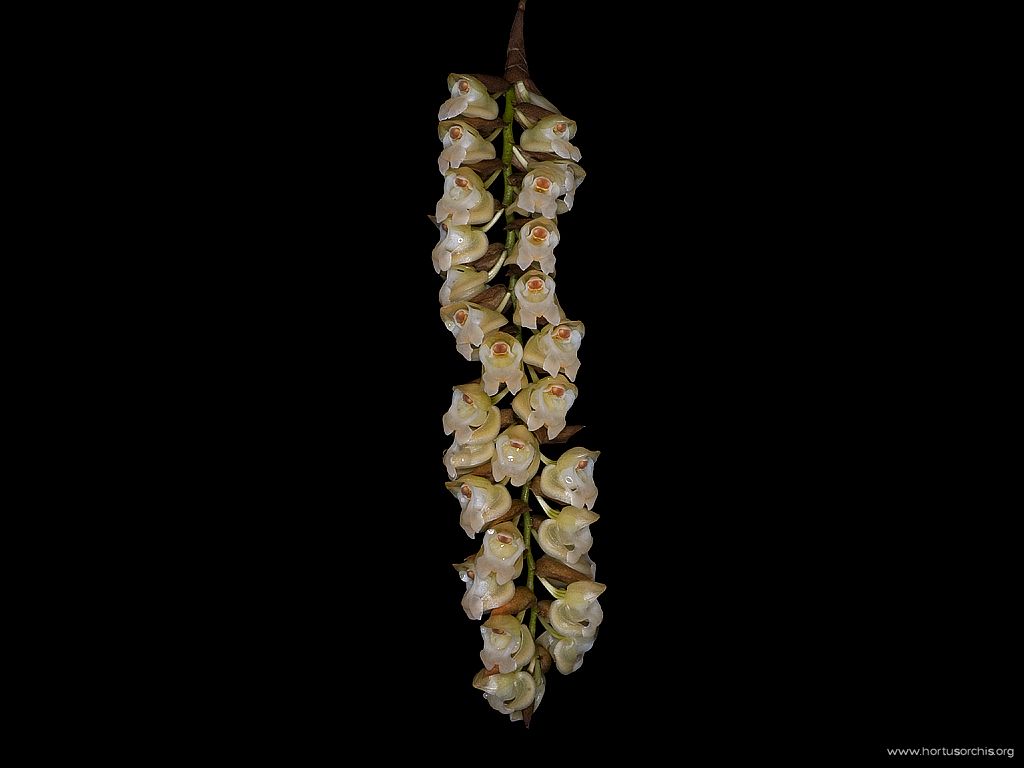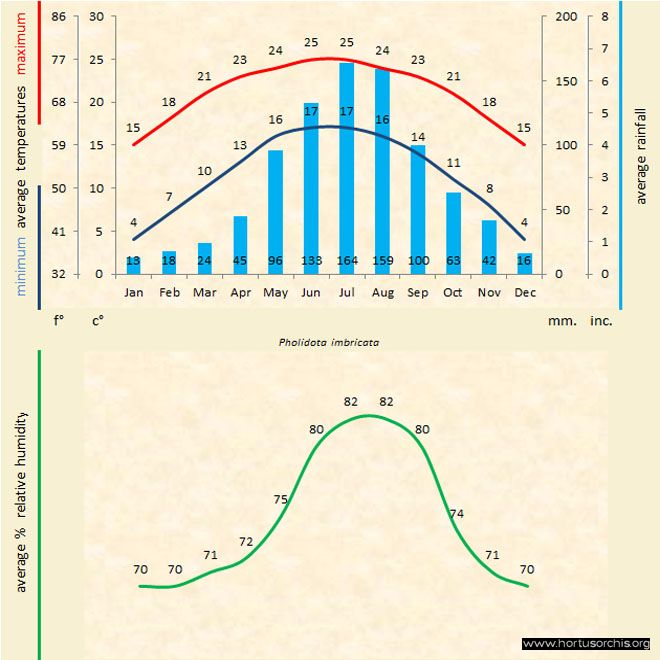
| Pholidota imbricata photo C. Solimbergo |
| taxonomy | described by | Hooker, William Jackson |
| published in | Exotic Flora 2 : ad , pl . 138 | |
| family | Orchidaceae | |
| subfamily | Epidendroideae | |
| tribe | Dendrobieae | |
| subtribe | Coelogyninae | |
| genus | Pholidota Lindley ex Hooker 1825 | |
| chromosomes | 2n = 40 | |
| metabolism | CAM pathway, stomata of the leaves are open at night. | |
| (K.Silvera, L.S. Santiago, J.C. Cushman, K. Winter - International Symposium on Plant Biology, August 2013) | ||
| it is useful give the soluble mineal nutriens, on the roots. | ||
| native of | origins |
rain forests in Bangladesh, India (Assam, Mts. Khasia, Travancore, Periakanal, Nagaland, Koima, |
| Baga Panee, Myrung), Sri Lanka, Bhutan, Nepal, Burma, Laos,Thailand (Doi Sootep, Kao Den, | ||
| Chiengmai, Patalung, Kao Saming, Doi Inthanond), Viet Nam (Dak Lak, Ha Giang, Nghe An, | ||
| Quang Binh), China (Sichuan, Xizang Zizhiqu, Yunnan, Gossain Than), Indonesia (Kanikeh), | ||
| Malesia (Pahang, Sarawak, Siburan), Papua, Australia, Pacific Islands | ||
| altitude | 420 - 1829 (2700) m (1386 - 6036 (8910) ft) | |
| habitat | climate informations from Yuanmou (Yunnan, China) | |
| Köppen climate classification : Cfa, humid subtropical climate in all seasons, with very hot summers | ||
| the weather station data (temperatures are calculated for an altitude of 1100 / 3630 ft) : | ||
 |
||
| photoperiod | in Yuanmou this orchid bloom with a photoperiod, that varies during the year, from 13 h 42 m' to 10 h 18 m' | |
| life form | epiphyte or litophyte | |
| brightness | partial shade | |
| inflorescence | length | 20 - 44 cm (8" - 17.6"), apical |
| nr flowers | 32 - 45, fragrants | |
| size | single flower 1 L 0.7 cm (0.4" L 0.28") - inflorescence 15 L 3 cm (6" L 1.2") | |
| duration | inflorescence ≈ 15 days | |
| time | birth to bloom, ≈ 100 - 120 days | |
| CITES | appendix | II |

